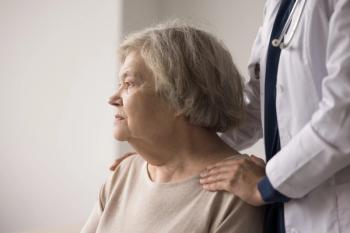“Never Silence Your Pain”: Life After a Suicide Attempt
One man shares his suicide survival story, and what he does to aid suicide prevention.
CONFERENCE REPORTER
“Are you okay? Is something wrong? Can I help you? These were quite literally the only words I desperately needed to hear the day I found myself standing atop the Golden Gate Bridge walkway, believing beyond a shadow of a doubt that I had not one other course of action to take but to die by these 2 hands,” said Kevin Hines, author, public speaker, documentary filmmaker, and keynote presenter at the American Psychiatric Nurses Association (APNA) 35th Annual Conference.
In his presentation, “Cracked Not Broken...Surviving and Thriving After a Suicide Attempt,” Hines shared thoughts on suicide prevention and recovery, steps for building mental health, and the importance of establishing relationships that heal, all informed by his lived experience.
At age 19, after a tumultuous childhood, Hines seriously began contemplating suicide, and even wrote a note to loved ones. He was having auditory hallucinations, voices “screaming in his head, telling him what to do.” Hines felt unable to share his pain with his family. On September 25, 2000, Hines walked up the Golden Gate Bridge. As he tells it, Hines believed he “had no other course of action”—that he had to die.
Hines told the audience of the horrifying statistics: Of the Golden Gate Bridge jumpers, 99% do not survive. Of the 1% that survive the 220 feet fall, a majority of them have admitted to having instantaneous regret. “They call us the most exclusive survivors club in the world,” Hines said. “I get to be here. And getting to be here is a privilege and a gift.”
With the second chance he was given, Hines is determined to help others. He shared the steps he takes every day to keep mentally well, in the hopes it may help other patients:
1. Therapy. Hines participates in regular cognitive behavioral therapy, talk therapy, music therapy, blue wave light box therapy, breath therapy.
2. Meditation. On a regular basis, Hines meditates using the Headspace app. By clearing his mind and destressing, Hines lives more well-rounded and builds wellness patterns.
3. Exercise. Approximately 3 days a week, 23 minutes a day, Hines engages in rigorous exercise.
4. Sleep hygiene. Keeping a consistent sleep schedule, 7-9 hours every night, with no caffeine past 2PM, helps keep Hines’s mind clear.
5. Proper nutrition. Proper nutrients keeps him physically and mentally healthy, and ready for the day.
6. Education. He keeps up to date on the latest in mental health news, and helps educate his friends and family.
7. Coping strategies. Hines stressed the importance of volunteering for a cause—when you give back, you feel better.
8. Medication. He takes his meds every day at the same time every day, and it helps him feel better. “It could change your life,” he said.
9. “The Plan.” Hines made a binder that he gave to his personal protectors, so they knew what to do if he seemed mentally unstable. It includes his story, his medications, his symptoms, and his triggers. This plan helps him stay positive, well, safe, and self-aware.
“If you are going to learn 1 thing from me today, and 1 thing alone, may I please ask that is be this: Never again silence your pain. Your pain is worthy of my time and others. Your pain is important. Your pain is valid. Your pain matters, simply because all of you do,” Hines shared.
Newsletter
Receive trusted psychiatric news, expert analysis, and clinical insights — subscribe today to support your practice and your patients.















